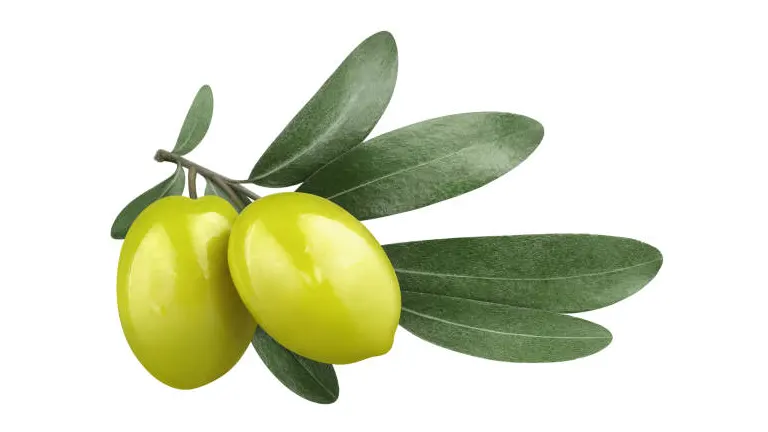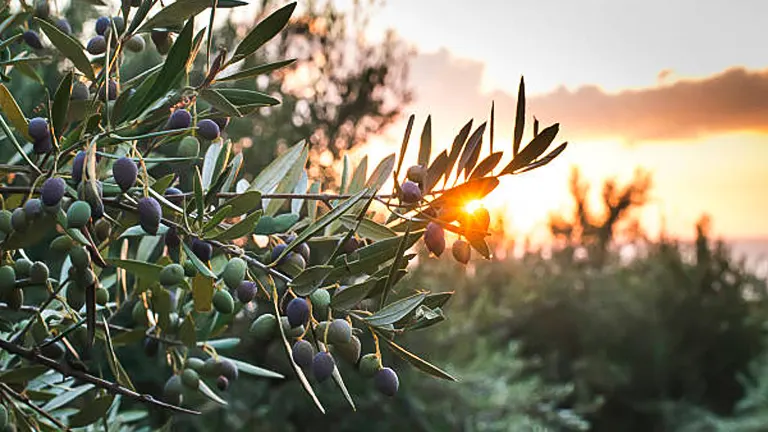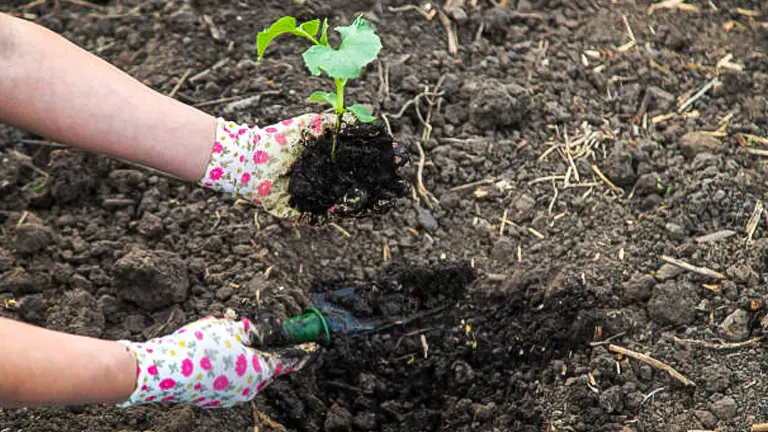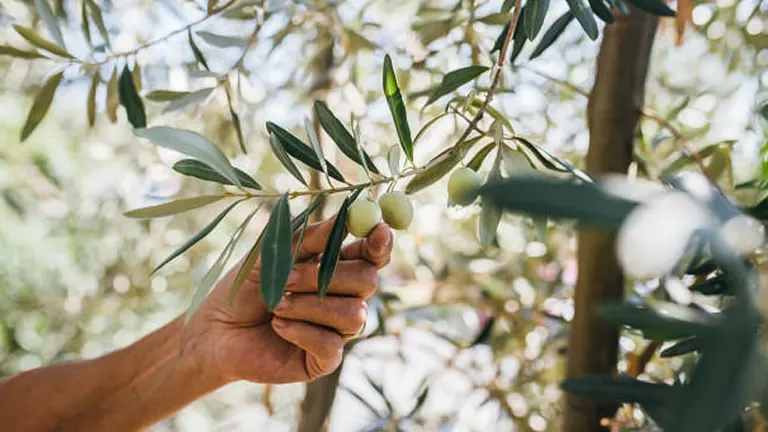How to Fertilize Olive Trees: Essential Techniques to Prevent Underperformance
- May 23, 2024
- 0 comment
Learn how to fertilize olive trees effectively to prevent underperformance and boost growth. Essential techniques for robust trees. Fertilizing olive trees effectively is crucial for ensuring their health and productivity. Many gardeners face the challenge of underperformance due to inadequate or improper fertilization practices.

This guide will provide you with essential knowledge and steps to optimize your olive tree care. Whether you are a seasoned horticulturist or a beginner, these tips will help you achieve vigorous growth and abundant yields. Let’s explore the best practices to keep your olive trees thriving year after year.
Table of Contents
- Understanding Olive Tree Nutrition Needs
- Choosing the Right Fertilizer
- Fertilization Techniques and Timing
- Monitoring and Adjusting Fertilization Practices
- Common Mistakes in Fertilizing Olive Trees
- Conclusion
- FAQs
Understanding Olive Tree Nutrition Needs

Olive trees, botanically known as Olea europaea, thrive when provided with a balanced blend of macronutrients and micronutrients, which are crucial for their growth, health, and productivity. The primary macronutrients required are nitrogen (N), phosphorus (P), and potassium (K). Additionally, micronutrients such as magnesium (Mg), iron (Fe), zinc (Zn), and manganese (Mn) play vital roles in the tree’s physiological functions.
- Nitrogen (N) is vital for promoting leaf and branch growth. It’s a key component of chlorophyll, which drives photosynthesis.
- Phosphorus (P) aids in the development of strong root systems and is integral to the process of energy transfer within the plant.
- Potassium (K) contributes significantly to water regulation and disease resistance, and it enhances the quality and size of the fruits.
- Magnesium (Mg) is a central component of chlorophyll, essential for photosynthesis.
- Iron (Fe) is necessary for the synthesis of chlorophyll and plays a role in several enzymatic systems within the plant.
Deficiencies in these nutrients can manifest in various ways. Nitrogen deficiency typically causes yellowing of the leaves, known as chlorosis. Phosphorus deficiency can result in stunted growth and dark, dull leaf colors, while potassium deficiency often leads to leaf scorching and curling. Magnesium deficiency presents as interveinal chlorosis, where the space between leaf veins turns yellow.
Nutritional Needs Across Developmental Phases
Olive trees have distinct nutritional needs at different stages of their life cycle:
- Planting Phase: High phosphorus levels are critical to stimulate root development.
- Growth Phase: An increase in nitrogen supports robust foliage and branch expansion.
- Fruiting Phase: A balanced N-P-K ratio with an emphasis on potassium is essential for fruit development and quality.
- Post-Harvest: Reduced nitrogen intake helps minimize excessive vegetative growth during dormancy.
Soil Analysis and Preparation
Before planting or fertilizing olive trees, it is imperative to conduct a comprehensive soil analysis. This analysis should not only determine the levels of N-P-K and pH but also measure the concentrations of essential trace elements and organic matter content.
- Soil Testing: Utilize professional soil testing services for an accurate assessment, focusing on nutrient profiling and pH measurement.
- pH Adjustment: Olive trees perform best in slightly acidic to neutral soils (pH 6.0-7.5). Lime can be applied to raise the pH of overly acidic soils, whereas sulfur can help lower the pH of alkaline soils.
- Enhancing Soil Structure: Incorporating organic matter such as compost or well-rotted manure improves soil texture, which enhances water retention, aeration, and root penetration.
Proper soil preparation not only optimizes the soil for nutrient uptake but also lays the foundation for a healthy olive tree.
Nutrient Requirements and Deficiency Symptoms in Olive Trees
| Nutrient | Function | Deficiency Symptoms |
|---|---|---|
| Nitrogen | Leaf and branch growth, chlorophyll synthesis | Yellowing leaves, reduced growth |
| Phosphorus | Root development, energy transfer | Stunted growth, dark and dull leaf colors |
| Potassium | Water regulation, disease resistance | Leaf scorching, curling |
| Magnesium | Chlorophyll synthesis, photosynthesis | Interveinal chlorosis (yellowing between veins) |
| Iron | Chlorophyll synthesis, enzyme function | Leaf yellowing, poor growth |
Choosing the Right Fertilizer

Choosing the correct type of fertilizer is vital for optimizing the health and productivity of olive trees, which involves understanding the distinct benefits of both organic and synthetic fertilizers, and selecting one based on the tree’s life stage and specific soil needs.
Types of Fertilizers and Their Benefits
- Organic Fertilizers: Organic fertilizers, sourced from natural materials such as animal manure, compost, bone meal, or seaweed extracts, provide a gradual release of nutrients, which ensures a steady supply that supports sustained growth. The benefits of using organic options include:
- Enhanced Soil Health: They improve soil structure, increase water retention, and promote beneficial microbial activity.
- Environmental Sustainability: Organic fertilizers are environmentally friendly, reducing the risk of chemical run-off.
- Nutrient Efficiency: While they have lower nutrient concentrations, their organic matter content helps stabilize nutrients, making them more accessible to plants over time.
- Synthetic Fertilizers: Synthetic or chemical fertilizers are engineered to provide nutrients in highly concentrated forms. Key advantages include:
- Immediate Nutrient Availability: They are particularly effective during critical growth periods when trees need quick nourishment.
- Precision in Formulation: Synthetic fertilizers can be tailored to provide specific N-P-K ratios as needed by the olive trees.
Recommended Fertilizer Practices
To optimize nutrient uptake and ensure healthy development throughout various growth stages, consider the following guidelines:
- Growth Phase: Utilize a balanced N-P-K ratio such as 10-10-10 to support leaf, branch, and root development. This balanced approach helps maintain overall tree vigor during the expansion stage.
- Fruiting Phase: As the tree prepares to bear fruit, switching to a potassium-rich formula (e.g., 5-10-15) supports fruit set and enhances the quality and size of the olives. Potassium plays a crucial role in water regulation and photosynthesis efficiency.
Adhering to Soil Test Recommendations
Always tailor your fertilization strategy to the results of a detailed soil test. This test will provide vital information on existing nutrient levels and pH, guiding your choice of fertilizer:
- Adjusting to Soil Needs: If the soil test indicates a deficiency in a particular nutrient, select a fertilizer that specifically addresses that need.
- Frequency of Application: The timing and frequency of fertilizer application can be critical, especially to avoid nitrogen overload, which can lead to excessive vegetative growth at the expense of fruit production.
Fertilizer Types and Their Impact on Olive Trees
| Fertilizer Type | Nutrient Release | Benefits | Ideal Usage Phase |
|---|---|---|---|
| Organic | Slow | Improves soil health, sustainable | Early growth, general health |
| Synthetic | Fast | Quick nutrient availability, precise | Critical growth phases, nutrient deficiencies |
By considering the detailed aspects of each fertilizer type and aligning them with the specific stages of olive tree development and soil conditions, growers can make informed decisions that lead to healthier trees and more bountiful harvests.
Fertilization Techniques and Timing

Effective fertilization of olive trees requires not only the right nutrients but also strategic timing and innovative application methods to maximize nutrient uptake and promote robust growth and fruitful harvests.
Strategic Timing for Fertilization
Understanding the optimal times to fertilize olive trees throughout the year is crucial for supporting their growth phases and fruit production:
- Spring (Vegetative Growth Phase): Initiate the season with nitrogen-rich fertilizers to fuel vigorous leaf and branch development. Targeted application during this phase sets the stage for healthy growth, which is essential for later fruit production.
- Late Spring to Early Summer (Pre-Fruiting Phase): Transition to balanced fertilizers (e.g., 10-10-10 ratio) to maintain growth momentum and start supporting the upcoming fruit development. This ensures that the trees are nutritionally prepared for the demands of fruiting.
- Post-Harvest (Recovery and Preparation for Dormancy): Apply fertilizers with a reduced nitrogen content to help trees recover from the production phase and gradually prepare for the dormant winter, minimizing unnecessary vegetative growth.
Innovative Application Techniques
The method of fertilizer application plays a significant role in how effectively olive trees can absorb and utilize the provided nutrients:
- Broadcasting:
- Method: Evenly spreading granular fertilizer around the tree, extending just beyond the drip line.
- Benefit: Encourages broader root growth and ensures that the expanding root system has access to nutrients.
- Banding:
- Method: Placing fertilizer in narrow bands along the rows of trees, close to the root zones.
- Benefit: Increases efficiency by concentrating nutrients near the roots, reducing waste and enhancing uptake.
- Foliar Sprays:
- Method: Spraying liquid fertilizers directly onto the leaves.
- Benefit: Provides rapid absorption of trace elements and can be particularly effective when quick nutrient intervention is needed.
- Fertigation:
- Method: Integrating water-soluble fertilizers into the irrigation system, allowing for precise and uniform application.
- Benefit: Enhances nutrient distribution, minimizes runoff, and conserves water and fertilizer by delivering nutrients directly to the root zone.
Fertilization Timing and Techniques for Olive Trees
| Phase | Fertilizer Type | Application Technique | Objective |
|---|---|---|---|
| Spring | Nitrogen-rich | Broadcasting, Fertigation | Stimulate vigorous vegetative growth |
| Late Spring/Summer | Balanced (e.g., 10-10-10) | Banded, Fertigation | Support growth and initiate fruit development |
| Post-Harvest | Low nitrogen | Broadcasting, Banded | Prepare for dormancy, reduce excessive growth |
Monitoring and Adjusting Fertilization Practices

To achieve the best results in olive cultivation, it’s essential to continually monitor and adjust your fertilization practices based on the trees’ responses and environmental conditions. Effective monitoring helps you understand the impact of your fertilization strategy and make necessary adjustments to optimize tree health and fruit production.
Monitoring Techniques:
- Visual inspection: Regularly inspect trees for signs of nutrient deficiency or excess. Symptoms like leaf discoloration, leaf drop, or stunted growth can indicate nutritional imbalances.
- Soil tests: Conduct periodic soil tests to track changes in soil nutrient levels and pH, ensuring that the ongoing fertilization strategy aligns with the soil’s current conditions.
- Leaf analysis: This more precise method involves testing leaf tissue to directly measure nutrient uptake by the trees. It provides detailed information on which nutrients are actually being absorbed and which are deficient.
Adjustment Strategies:
- Adjusting nutrient ratios: Based on monitoring data, you might need to increase or decrease specific nutrients. For example, if leaf analysis shows a potassium deficiency, you could switch to a higher potassium fertilizer.
- Modifying application rates or methods: Depending on tree growth and soil nutrient levels, you may need to adjust how much fertilizer you apply or change the application method to increase efficiency.
- Seasonal adjustments: Olive trees’ nutrient needs can change with the seasons and their growth stages. Adjusting your fertilization practices accordingly ensures that the trees are not stressed by too much or too little nutrition at any time.
Implementing a responsive fertilization plan allows for dynamic adjustments that cater to the actual needs of the trees, promoting optimal growth and productivity.
Common Mistakes in Fertilizing Olive Trees

Fertilizing olive trees is a critical aspect of their cultivation, requiring precision and understanding to avoid common errors that can detrimentally impact the health of the trees and the quality of the fruit produced. Here, we delve into these common mistakes with the aim of helping growers make more informed and effective management decisions.
Critical Mistakes and Their Consequences
- Over-fertilization:
- Problem: Excessive use of fertilizers can lead to nutrient runoff, environmental pollution, and salt accumulation in the soil. This not only harms the local ecosystem but also jeopardizes the tree’s root health.
- Symptoms: Signs of over-fertilization include burnt leaf edges, unusually rapid vegetative growth that compromises structural integrity, and an increased vulnerability to pests and diseases.
- Mitigation: Implement soil testing to determine nutrient needs accurately and apply fertilizers accordingly to prevent excessive application.
- Under-fertilization:
- Problem: Insufficient nutrients can stunt tree growth and significantly reduce fruit yield.
- Symptoms: Observable indicators include a sparse canopy, weakened tree vigor, and underdeveloped, small fruits.
- Mitigation: Regular monitoring of tree health and productivity can guide the adjustment of fertilization practices to ensure adequate nutrient provision.
- Inappropriate Timing:
- Problem: Fertilizing at unsuitable times, such as late fall or winter when trees are less active, can result in nutrient wastage through leaching, as the trees are not in a position to absorb these nutrients effectively.
- Mitigation: Aligning fertilization schedules with the tree’s growth cycles and environmental conditions is crucial to enhance nutrient uptake and efficiency.
Recommended Practices for Effective Fertilization
To circumvent these common fertilization errors, adherence to best practices is essential. This includes:
- Soil Testing: Conduct thorough soil tests periodically to understand nutrient levels and soil pH, guiding precise fertilizer applications.
- Tailored Fertilization Plans: Develop a fertilization plan that considers the specific stages of tree growth, soil conditions, and climatic factors.
- Educational Outreach: Engaging in continuous learning and extension services can update growers on the latest research and techniques in olive cultivation.
Fertilization Mistakes and Management Strategies
| Mistake | Symptoms | Management Strategies |
|---|---|---|
| Over-fertilization | Burnt leaf edges, rapid growth | Soil testing, calibrated fertilizer application |
| Under-fertilization | Sparse canopy, small fruits | Monitoring tree health, adjusting nutrient inputs |
| Inappropriate Timing | Nutrient leaching, ineffective uptake | Aligning fertilization with growth cycles |
Related Post
- How to Build a Barn: A Step-by-Step Guide for Beginners
- How to Build a Sustainable Compost Bin: Easy and Eco-Friendly DIY
- How to Fertilize Bougainvillea: A Complete Guide for Stunning Blooms
- How to Fertilize Apple Trees: Essential Tips for a Bountiful Harvest
- How to Fertilize Lemon Trees: Secrets for Thriving Citrus
- How to Fertilize Avocado Tree: A Step-by-Step Guide for Lush Growth
- 10 Best Bow Saws to Buy in 2024: Top Picks for the Money
- Best Miter Saw For Beginners
- Top 10 Pruning Saws to Buy in 2024: Best for the Money
- 7 Best Pocket Chainsaw
Conclusion
Fertilizing olive trees is a critical aspect of their cultivation, directly impacting their health, growth, and productivity. This article has outlined essential techniques and best practices for optimal fertilization, from understanding nutrient needs and preparing the soil to selecting the right fertilizers and applying them effectively. It also highlighted the importance of monitoring and adjusting fertilization practices to suit specific conditions and avoid common errors.
FAQs
- What is the best time of year to start fertilizing young olive trees?
Begin fertilizing young olive trees in early spring as they exit dormancy and the temperatures start to rise. This timing helps support the new growth they will put on during the growing season. - How often should I fertilize my olive trees during the growing season?
Generally, olive trees should be fertilized every two to three months during the growing season. Adjust the frequency based on the tree’s response and soil nutrient levels, which can be assessed through regular soil testing. - Can over-fertilization affect olive oil quality?
Yes, over-fertilization, particularly with nitrogen, can lead not only to excessive vegetative growth but also to lower oil quality. High nitrogen levels can reduce the concentration of polyphenols in the olive oil, impacting its flavor, stability, and health benefits. - What signs indicate that my olive tree is under-fertilized?
Signs of under-fertilization include stunted growth, light green to yellow leaves, reduced leaf size, and sparse or small fruit production. If you observe these symptoms, consider revising your fertilization plan. - Is it necessary to adjust fertilizer types based on the age of the olive tree?
Yes, younger olive trees generally require more phosphorus to encourage root development, while mature trees benefit from a balanced N-P-K fertilizer to support fruiting and overall health. - How does soil pH affect fertilizer efficiency in olive trees?
Olive trees prefer slightly acidic to neutral soil (pH 6.0-7.5). If the pH is outside this range, nutrients in the fertilizer can become less available to the trees. Adjusting the soil pH can help maximize the effectiveness of the fertilizers applied. - What is the role of micronutrients in olive tree fertilization?
Micronutrients, such as iron, manganese, and zinc, are crucial for the metabolic processes of olive trees, despite being needed in smaller quantities. Deficiencies can lead to poor growth and fruiting, so including a micronutrient formula or using foliar sprays can be beneficial. - How can I tell if I am over-fertilizing my olive trees?
Over-fertilization can be identified by overly rapid growth, a lush, thick canopy that’s prone to pests and diseases, and burnt or browning edges on leaves due to salt accumulation in the soil. Soil tests can also indicate excessive nutrient levels, prompting a reduction in fertilizer application.
By following these essential fertilization techniques, you’ll be well on your way to ensuring your olive trees remain healthy and productive. Remember, the key to preventing underperformance lies in understanding your trees’ needs and adjusting your practices accordingly. Happy growing!

Emma Hudson
Forestry AuthorEmma's experience in farming shapes her detailed guides on gardening and farming tools, providing practical, actionable advice grounded in real-world experience. Her work targets both newcomers and experienced farmers, aiming to enhance their practices with a mix of traditional wisdom and modern techniques. By making complex agricultural concepts accessible, Emma's guides serve as valuable tools for those navigating the challenges of contemporary farming, offering strategies for sustainable success.













Leave your comment